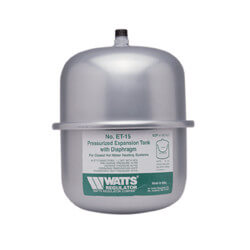Douglefish
Well-Known Member
- Joined
- Dec 22, 2008
- Messages
- 263
- Reaction score
- 2
------------

I haven't due to me wanting to collect the yeast and clean my fermenter due to the same things you were worried about later in this response. I don't see a problem with it though as long as you are ready for a fast fermentation, and only doing it once (you don't want to overpitch that much)!!!nbspindel said:hey wortmonger,
would you be able to expand on the section on reusing the yeast cake? i understand how you pour pre-boiled water onto the cake, re-tap, and then clean using the provided link. Have you ever just poured new wort directly onto the remains in your secondary keg?
It is worth a shot, just be sure to slowly release your pressure prior to washing or reusing your yeast cake. Kaiser pointed out that the fast release of pressure from the yeast makes the cell walls rupture. I gradually release my pressure now over a couple of days and haven't had any problem. Then again, I only worry every now and then about harvesting. I harvest, build a starter from my bank, and through the spent yeast away until I need more now. But that isn't saying using a yeast cake wouldn't work.nbspindel said:I'm thinking the next two brews i'll do will use the same yeast. after transferring brew 1 from the secondary to the serving keg, i would be boiling brew 2 to pour right onto what's left in the used secondary keg. What i worry about here is any junk left around the sides of the keg giving off flavors. Or does anyone think it's possible to put a second brew right onto the yeast and trub left over in the primary? I think that's a worse idea because of the trub.
thanks for your thoughts.









![Craft A Brew - Safale S-04 Dry Yeast - Fermentis - English Ale Dry Yeast - For English and American Ales and Hard Apple Ciders - Ingredients for Home Brewing - Beer Making Supplies - [1 Pack]](https://m.media-amazon.com/images/I/41fVGNh6JfL._SL500_.jpg)




will outside air slowly leak into the keg as the wort cools?
You could run a dip tube on the manifold side to the bottom of the pipe and have the SV side open just like a keg would be. Then fill the pipe with just enough water to have your CO2 bong through it in the case of a krausen blow-off. No mess then! Over fill your kegs and you could even utilize it as a top-cropping yeast collector


 !
!No, I recommend the liquid filled (but... get the all stainless ones for outside rust issues). I chose a 60 because a 30 isn't high enough for when you take your temperature and pressure higher for carbonation. At cooler temperatures 30 would work just fine, since the pressure would be lower. But... at 70*F 30 psi isn't a lot. My guage was unusable at carbonation temperatures and I didn't even put it back on until I was crash cooling. 30 will work, but you'll need to guess more. As for the relief valve I had... it only went to 20 psi. I needed at least +30 psi, and the next one up was the newest one I bought. I want to be able to control my pressure at whatever temperature I may be at.SankePankey said:Yeah, I meant gauge. So you recommend the regular stainless dry macmaster gauges? Why go with the 60 PSI? Why wouldn't a 30 be better and offer more precision? Same goes with the adj. pressure relief valve? How bout doing 30 on both? Also, is that one robust enough to boil too?
I have still only done 12.5 gallons due to my kegging procedures, but I feel it is possible to do 15 gallons with Fermcap.SankePankey said:I'd like to know how little headspace you've been able to achieve doing this. I have a converted sanke fermenter with a 4" triclamp top with ball lock disconnects like a corny. I am hoping that with this method I can get as close to a 15 gal ferment as possible.

if you haven't already designed it into the system, is that you should place a "trap" between keg connection and the regulator.
Keep in mind, a "trap" is unnecessary if you're fermenting under pressure. The top pressure keep the krausen low, very similar to a silicon anti-heading agent like fermcap.
I'm using 5gal cornies, filled with ~4.8gal of beer.
If you used a smaller fermenter on purpose in conjunction with a collector, wouldn't that be the best yeast for saving for a bank or future starter?